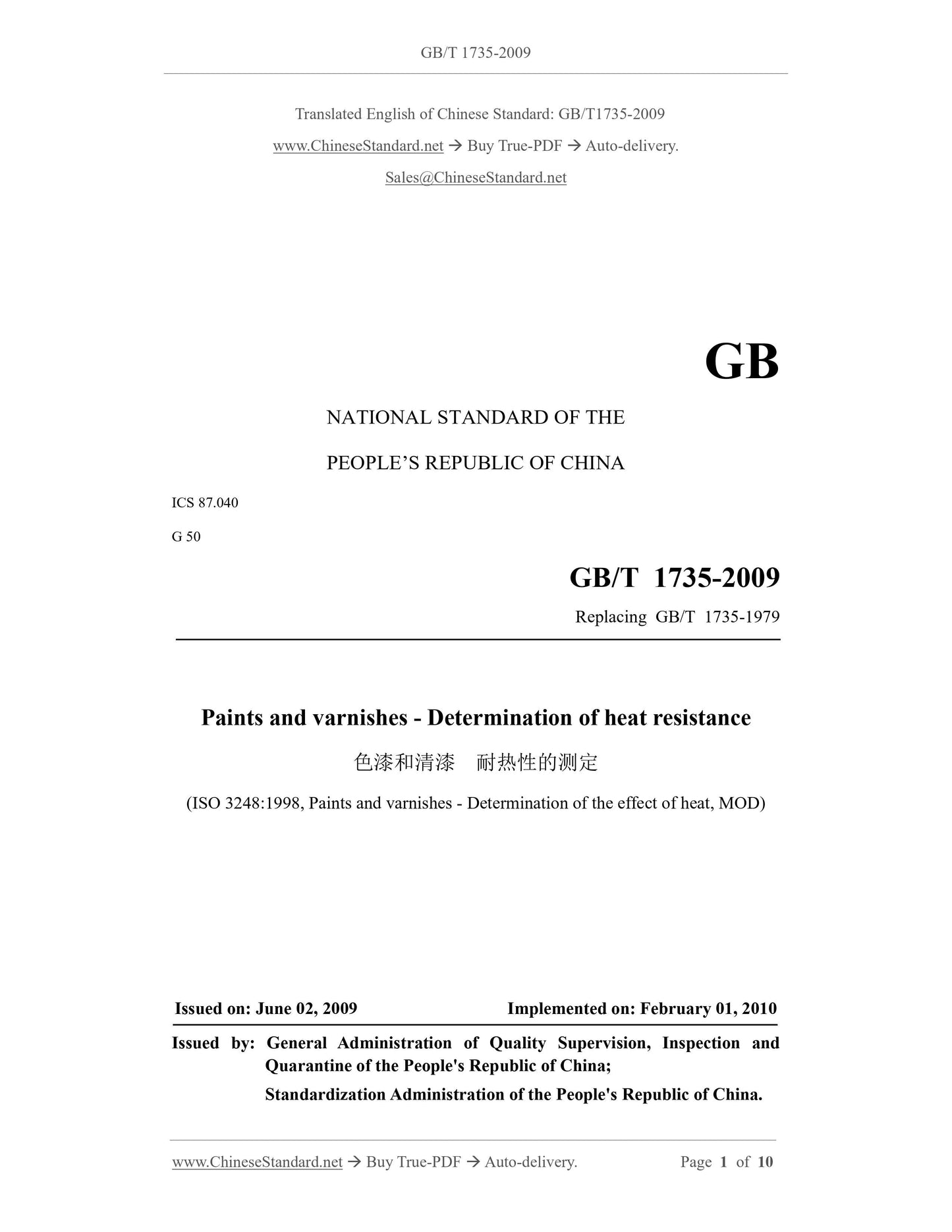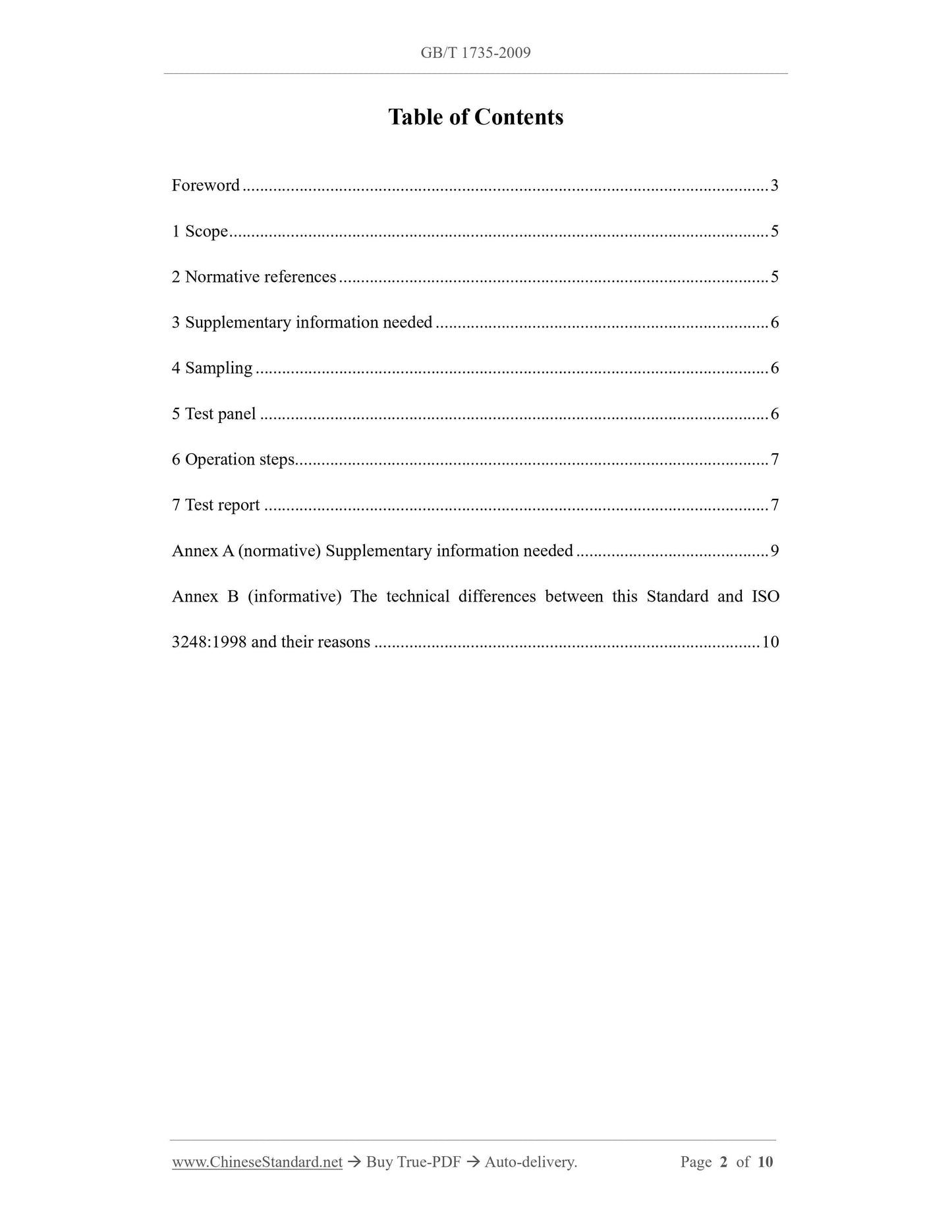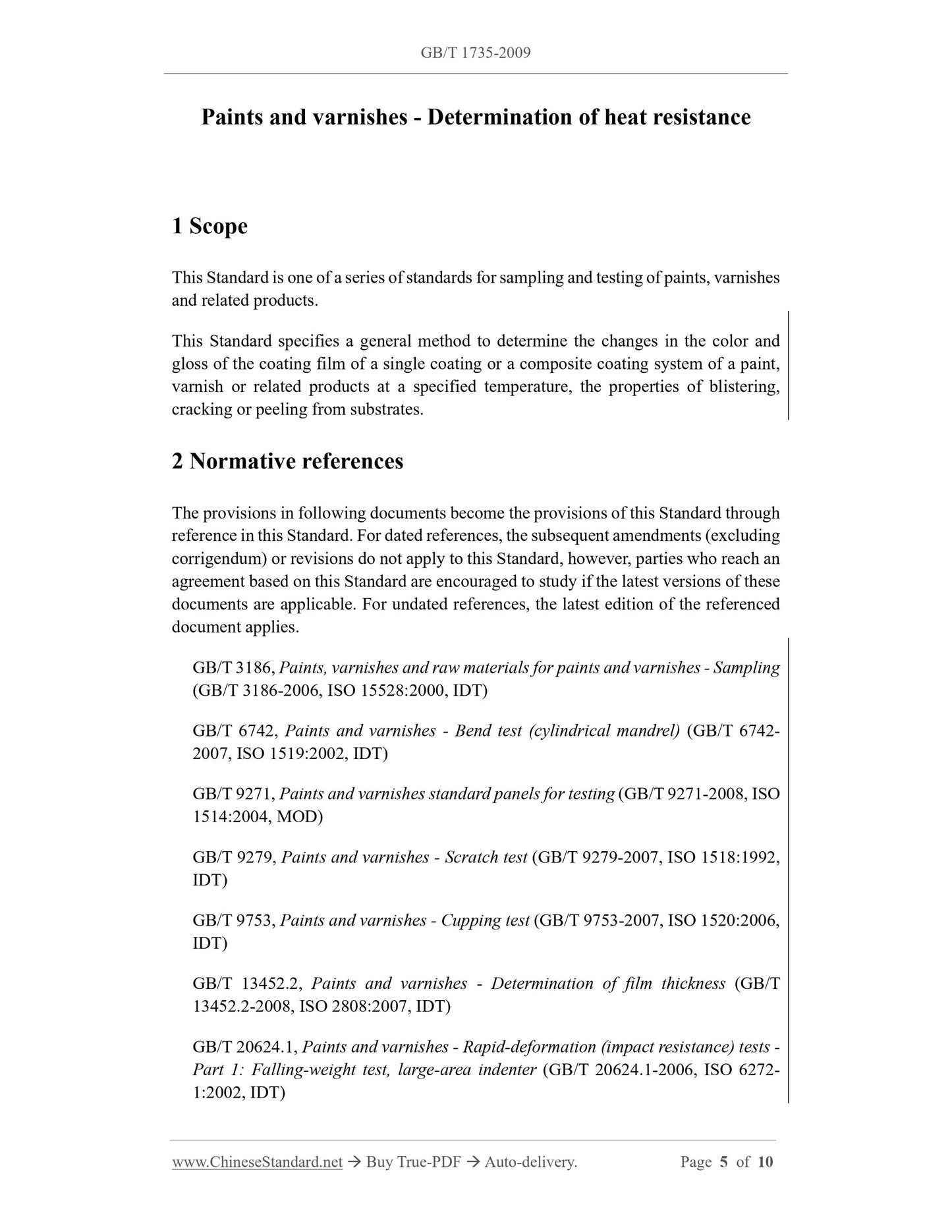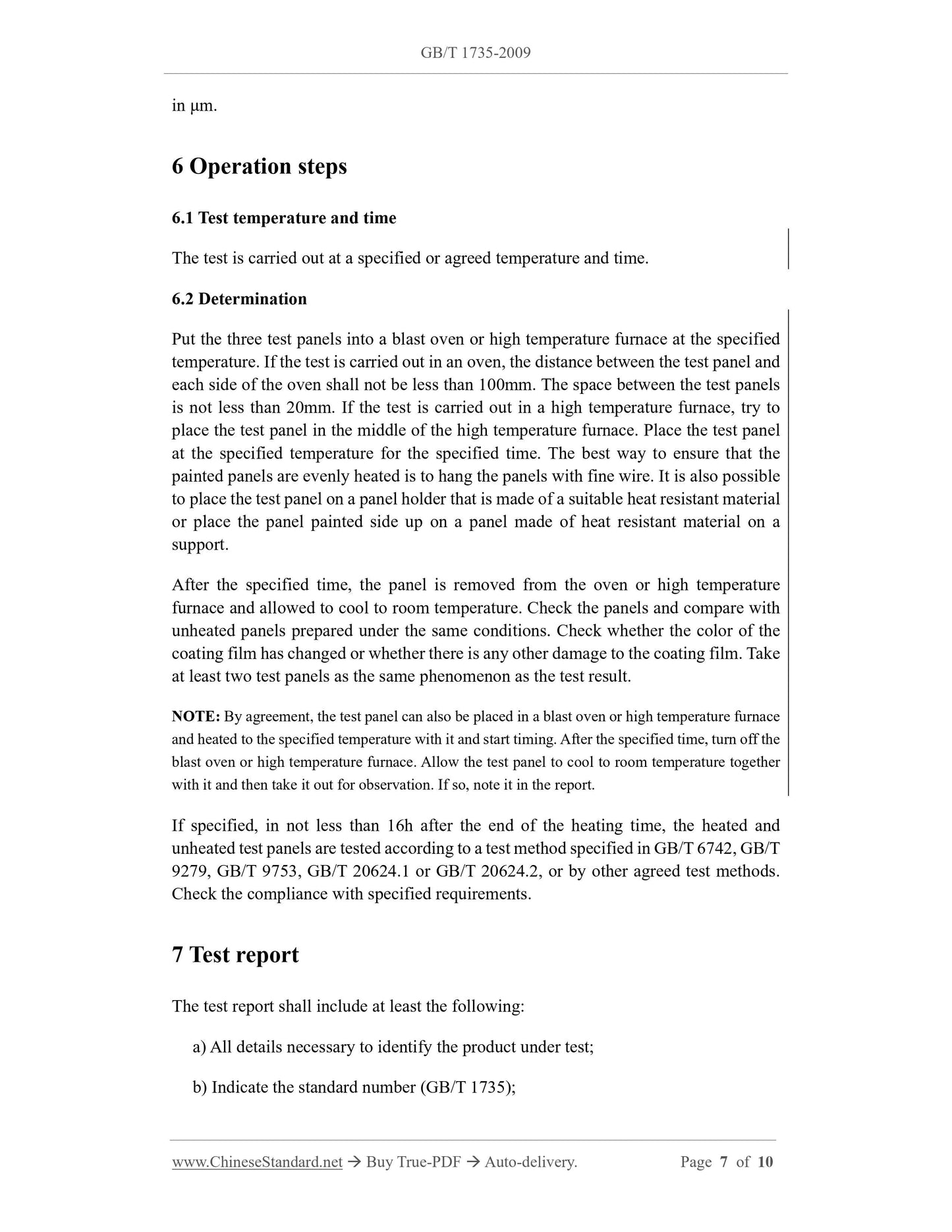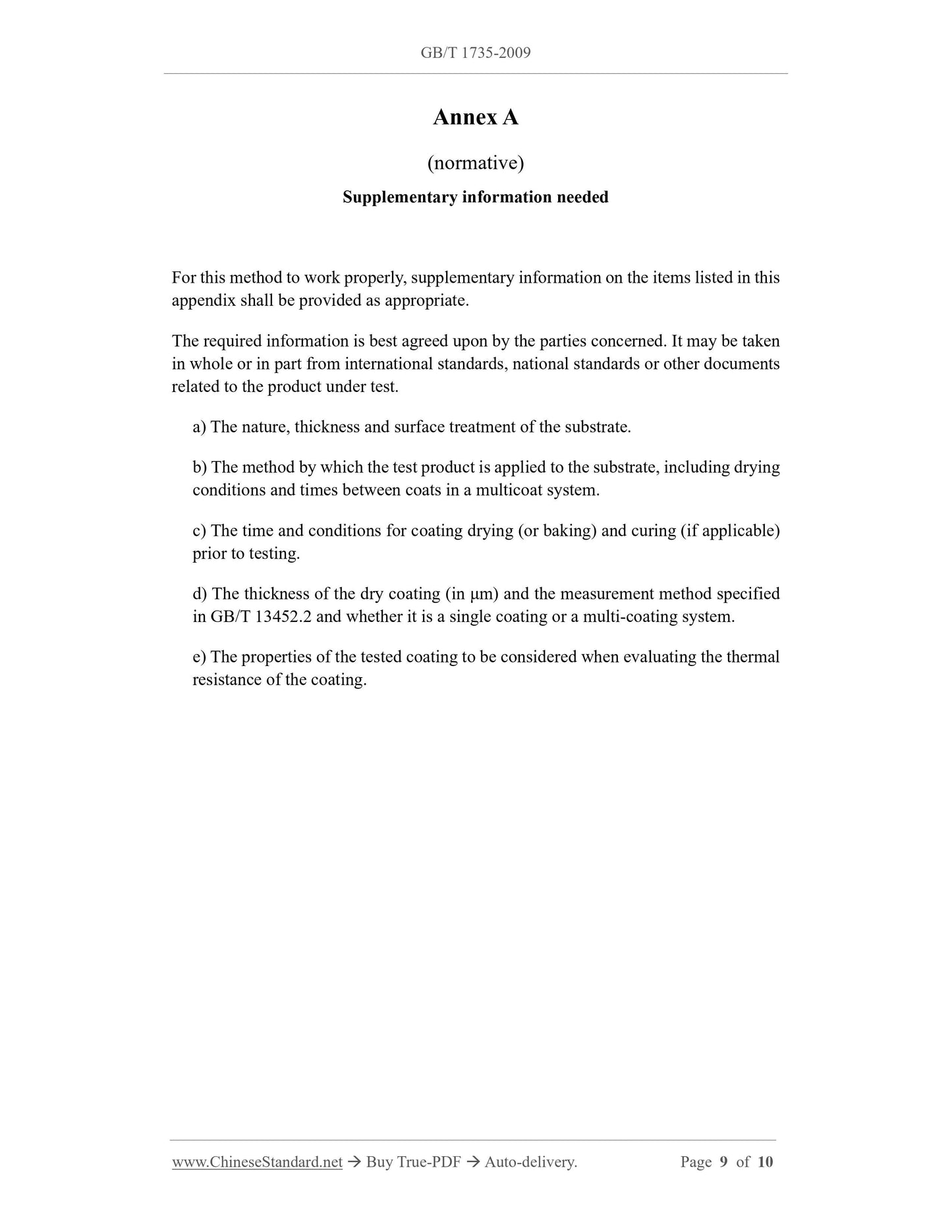1
/
of
5
www.ChineseStandard.us -- Field Test Asia Pte. Ltd.
GB/T 1735-2009 English PDF (GB/T1735-2009)
GB/T 1735-2009 English PDF (GB/T1735-2009)
Regular price
$105.00
Regular price
Sale price
$105.00
Unit price
/
per
Shipping calculated at checkout.
Couldn't load pickup availability
GB/T 1735-2009: Paints and varnishes -- Determination of heat resistance
Delivery: 9 seconds. Download (and Email) true-PDF + Invoice.Get Quotation: Click GB/T 1735-2009 (Self-service in 1-minute)
Newer / historical versions: GB/T 1735-2009
Preview True-PDF
Scope
This Standard is one of a series of standards for sampling and testing of paints, varnishesand related products.
This Standard specifies a general method to determine the changes in the color and
gloss of the coating film of a single coating or a composite coating system of a paint,
varnish or related products at a specified temperature, the properties of blistering,
cracking or peeling from substrates.
Basic Data
| Standard ID | GB/T 1735-2009 (GB/T1735-2009) |
| Description (Translated English) | Paints and varnishes -- Determination of heat resistance |
| Sector / Industry | National Standard (Recommended) |
| Classification of Chinese Standard | G50 |
| Classification of International Standard | 87.040 |
| Word Count Estimation | 6,684 |
| Date of Issue | 2009-06-02 |
| Date of Implementation | 2010-02-01 |
| Older Standard (superseded by this standard) | GB/T 1735-1979 (1989) |
| Quoted Standard | GB/T 3186; GB/T 6742; GB/T 9271; GB/T 9279; GB/T 9753; GB/T 13452.2; GB/T 20624.1; GB/T 20624.2; GB/T 20777 |
| Adopted Standard | ISO 3248-1998, MOD |
| Regulation (derived from) | Announcement of Newly Approved National Standards No. 8, 2009 (No. 148 overall) |
| Issuing agency(ies) | General Administration of Quality Supervision, Inspection and Quarantine of the People's Republic of China, Standardization Administration of the People's Republic of China |
| Summary | This standard is related to Paints, varnishes and related products, sampling and testing a series of criteria. This standard provides a general method used to determine the paint, varnish or related product single coating or composite coating system at the specified temperature coating color, gloss changes, blistering, cracking, or from the substrate stripping performance. |
Share
